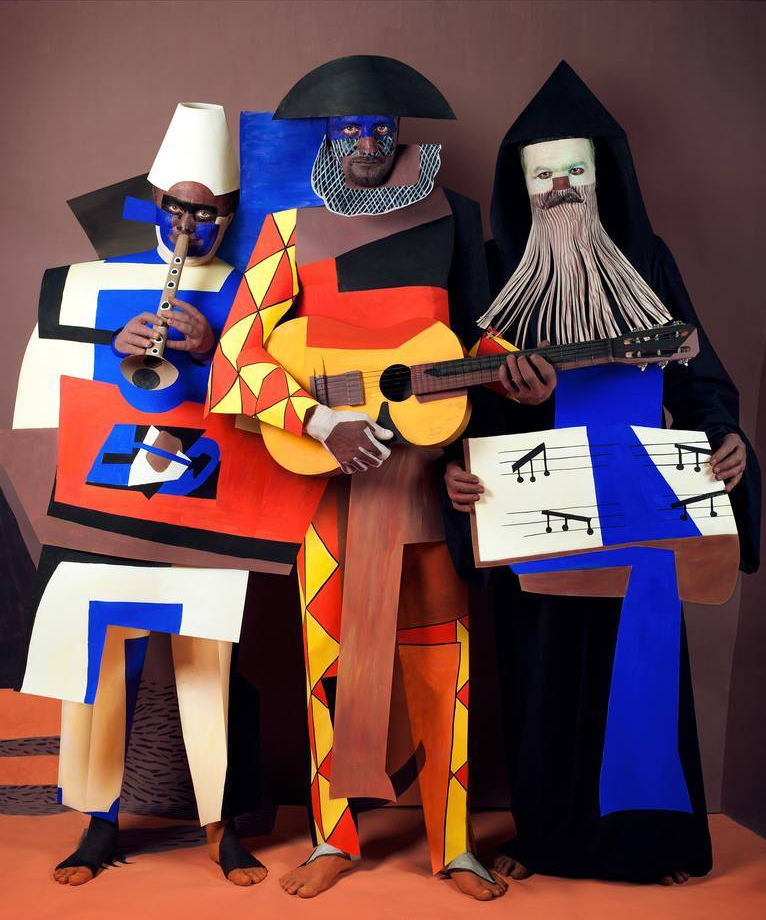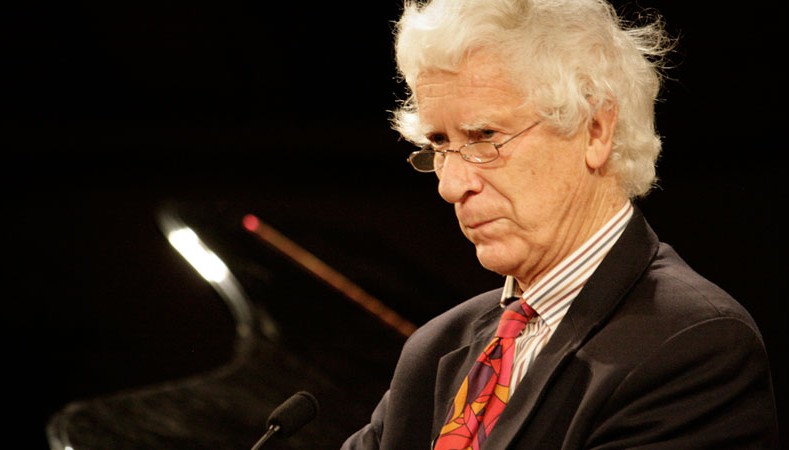
Irina Lesik, ‘Three Musicians’
Criticising contemporary worship songs has become pretty old hat. It’s such an easy target, with favourite gripes including (but not limited to): the lack of good theology, the ever-increasing prominence of ‘me, myself and I’, and the combination of complex musical arrangements with simplistic melody lines, or complicated melody lines with predictable arrangements, depending which side of the bed we emerge from.
But I think we are wrong. While I agree there are problems with contemporary worship music; I don’t agree that this is the sum total of the problem. There is a problem, but it may not be the music’s fault.
If you went back sixty years to many churches, you had people singing from hymn books, accompanied by an organist, perhaps strengthened by a choir, and in between the singing they were led through the service by a pastor, priest or minister. This person led prayers, said blessings, and ushered the congregation through the story-line that is worship. God welcomes us, we praise and confess, God speaks to us, God feeds us, we respond in prayer and offering, God sends, we go. The hymns belonged in the midst of this well-worn journey. Yes the hymns were richer in doctrine, or perhaps ‘thicker’ is a better word sometimes. And how could they not be when they have five to seven verses and no repetition?! But like then, as now, I don’t think the hymns were doing all the heavy lifting for giving the worship services its depth and meaning. Rather it was this careful curation through the worship journey of God encountering people, people responding, God blessing, people going – which was punctuated with spoken prayer, acts of blessing, celebrating sacraments and passing the peace as well as sung worship. Music was certainly part of that, but it was only part of it.
Recently I went to a seminary to teach some ministry students about worship. I asked them what their standard church services looked like. To be truthful, I asked them for their ‘liturgy’. This was their response:
- two to three upbeat songs
- Welcome
- two more upbeat songs plus prayer
- Notices. Kids go out
- two more reflective songs plus prayer
- Message
- one more reflective song, ministry time
As you can see, they covered some of the ‘how’ of worship, but they left the ‘what’ and the ‘why’ untouched. They weren’t able to tell me if the opening songs were functioning as a Call to Worship or as songs of adoration and praise. The prayers were not routinely prayers of confession or intercession, just whatever was ‘on the worship leader’s heart’. I don’t actually think it’s their fault, much like I don’t think it’s the fault of a generation of contemporary worship songwriters who have written theologically impoverished songs. Because the music was never meant to carry the liturgy, the liturgy was meant to carry the music. The liturgy is the order of what we do and why we do it, which was the task of the pastor, priest, minister, and it gave meaning to the songs we sang, the responses we made, the prayers we offered, and the gifts we brought. The old hymns didn’t exist in a theological vacuum, but most of our contemporary worship songs are expected to. We betray this when we ask the congregation to stand and sing with the words, ‘let’s worship’ – because music is now the only worshipful activity that remains to us. Perhaps what we are remembering when we recall the hymns, is not just the richness of the pieces of music themselves, but the general coherence of the service as a whole.
Now our worship songs (which are, let’s face it, more theologically lightweight than their forebears) are framed in a significantly vaguer space than before. We might know how many songs we do before the welcome, and then how many more before the notices, but we no longer remember what function those songs are meant to perform. Is it any wonder our songwriters struggle for depth? We have them playing in the paddling pool!
Now I’m not advocating a return to worship how it was ‘back in the good ol’ days’. I’m advocating that pastors, priests and ministers reclaim their role as liturgical theologians. Given the influence of the charismatic movement initially, compounded later by a shift in priorities for pastoral leaders as well as a heightened consumeristic expectations from church folk, pastors have largely abdicated having direct input into the worship service apart from the message, and they have handed that role over to musicians. One might ask, have those musicians begun to receive resourcing and training to enable them to lead the congregation in worship, to give voice to the spirituality of a whole community before God? In my experience, no. This situation may not strike us as odd because we are so used to it, but consider this scenario. How weird would it have been, ‘back in the good ol’ days’ to have let the organist lead the service, pick their favourite songs, and lead all the prayers (off the cuff) from the console? It didn’t make sense then, and I’m not sure it makes sense now.
Pastors are uniquely qualified to give logic and coherence to a worship service. They are pastorally linked in to what is happening in the congregation, they are theologically astute in order to let the great themes of Scripture seep through a whole service, and they are wordsmiths. Just the sort of people to craft prayers which gather up our hopes and our fears, and hold them alongside the promises of God. When the pastor abdicates this role to the guitarist, or leaves the guitarist with too few resources to draw upon, then the worship service starts to feel like a variety concert, rather than a pilgrimage into the heart of God, and then with God into the world.
What am I suggesting? If you’re in a church where the worship service is completely in the hands of the musicians, perhaps it’s a matter of sparking up some conversations with your key leaders, helping them to move beyond their own spirituality and into facilitating a experience of worship that is hospitable for the whole congregation, linking them with the cadence of God’s story. Introduce them to the rhythms of worship, the back and forward nature of God calling and people answering.
When we share the liturgical load across the service, I suspect we won’t find so many things lacking with our songs anymore. The strength of the contemporary worship song is that they are often simple; offering space to allow a truth to sink deep within us, or for us to reflect or wonder. Exactly the kind of liturgical experience that will deepen and enrich a thoughtfully tailored worshipping journey. These songs belong in a rich tapestry of artful worship, not hung out on their own.
When there is a coherence to our worship, and depth and meaning to our prayers, prayers where the word ‘amen’ comes out of us with conviction rather than out of habit, words of welcome and sending that draw people out of their small, fractured worlds, into the wide-open spaces of God, then I think we’ll be in a place to write even better songs as well.
Malcolm Gordon is the Worship, Music and Arts Enabler at the Knox Centre for Ministry and Leadership, Dunedin. [Reposted from Candour.]






